Ficus binnendijka: features and care tips

Ficus Benedict (Binnendijka) belongs to the mulberry family and is considered a very popular domestic plant. In the wild, it can be found in Southeast Asia. This species owes its name to Simon Benedict, who first described the culture. Binnendijka does not require any special conditions and does not need complex care.
Read about the features of this species, varieties and recommendations for growing in the article.
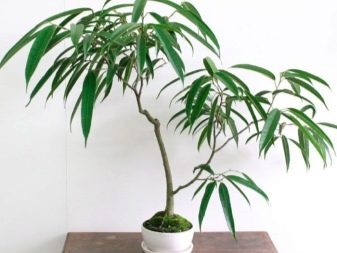

Description
This culture looks slightly unusual compared to other ficuses. In the wild, Benedict's ficus can reach fifteen meters in height. Narrow leaves have a pointed shape at the ends. The color of the leaves directly depends on the variety of ficus, as well as external conditions. It can be monochromatic or variegated. A clear longitudinal vein stands out on the leaves. It bends the sheet in two, as if creating a natural fracture.
Among gardening experts, it is customary to call this species "willow ficus". However, this is a vernacular name, not an official one.
Ficus Benedict is perfect for growers who do not have much experience in growing indoor plants.
This flower does not require complex maintenance. It will grow and delight you with its beauty, adding subtle tropical freshness to the atmosphere of the room, and comfort and novelty to the interior.

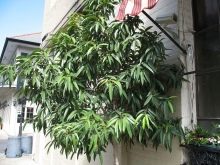
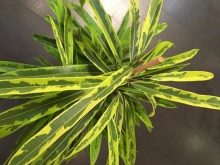
Varieties
In home floriculture, several varieties of ficus Benedict are distinguished.
- "Ali"... This flower has a dark brown trunk with light patches and a relatively small size. Unlike wild species, it does not reach more than 2 meters in height.
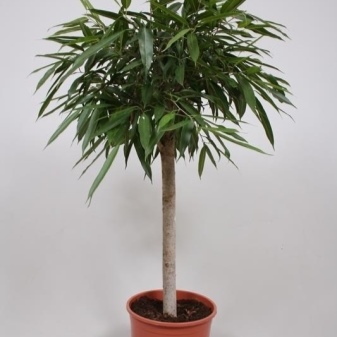
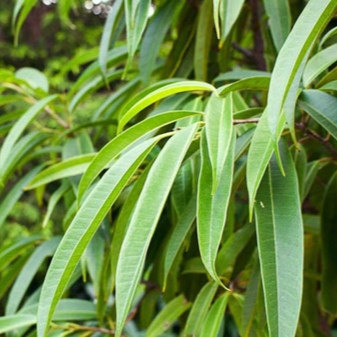
- Amstel King... This variety is also considered undersized, however, in comparison with the previous one, it has wider leaves (up to 7 centimeters wide).
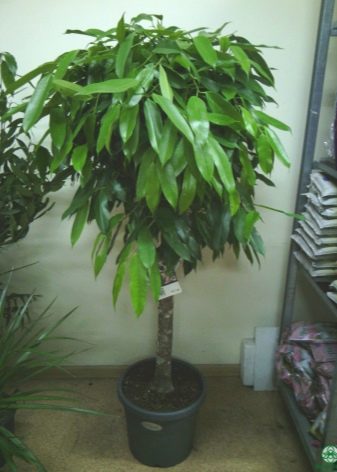
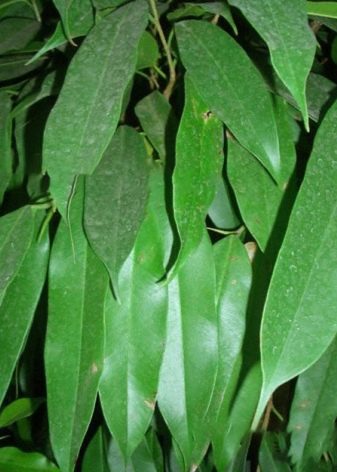
- Amstel Queen... This variety bears many similarities to Amstel King, but has slightly smaller leaf blades.

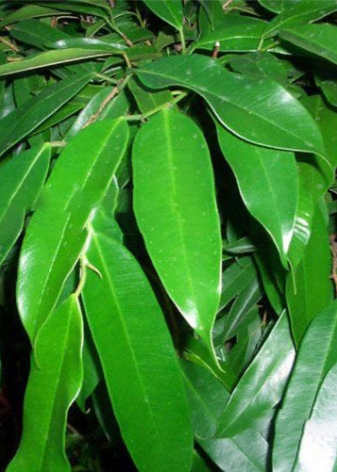
- Amstel Golden... The ficus of this variety has a yellow-green leaf color. Also, a characteristic feature of the variety is its strong dependence on the degree of illumination.
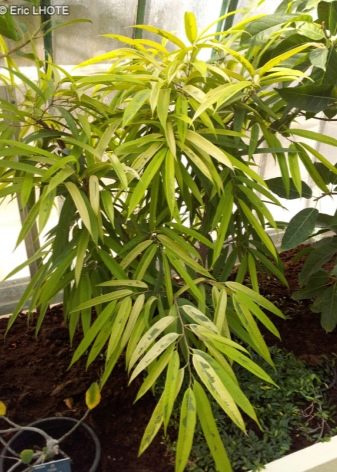

Flowering features
Ficuses have small, non-decorative male and female flowers. Sometimes they look more like a kind of growth on the trunk. In a room environment, ficus cannot bloom.

Landing
To transplant this plant, you need to choose a pot that will slightly exceed the previous capacity. The ficus must be very carefully removed from the pot (for this, you must first wet the earthen lump). After that, you need to move on to separating the roots from the soil. The root system of the flower must be carefully examined. If during the inspection you notice damaged, rotted or dead roots, they must be removed. Then place the ficus in a new pot, add soil and water.
After transplanting, the ficus does not need to be touched for a while. Such manipulation plunges the flower into a kind of stress, so it needs time to “calm down”.
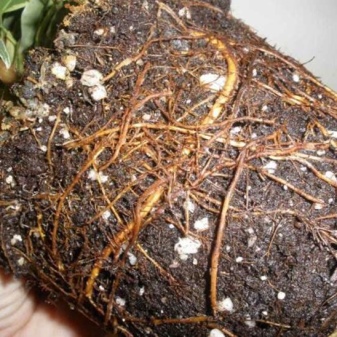
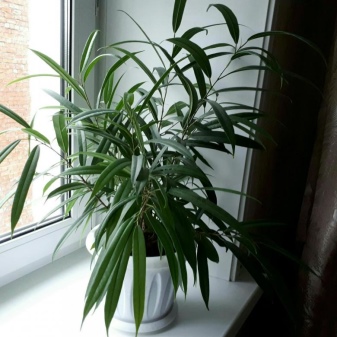
Home care
Ficus Benedict is a relatively unpretentious plant, however, certain rules must be followed in home care for it. This applies to the level of humidity of the environment, the principles of irrigation, the degree of illumination, the type of soil and, of course, the temperature regime. Let's consider all the nuances in order.
Ficus is considered a light-loving culture, which requires bright and diffused light to provide comfortable conditions. Especially high-quality lighting will be appreciated by variegated ficus. Varieties with a solid color of leaves can live comfortably in dim light.
The optimum temperature for the full development of culture is 22-24 degrees Celsius.
In the cold season, it is recommended to maintain the temperature regime at around 16 degrees Celsius. Sharp jumps in temperature indicators (especially a decrease) have an extremely negative effect on the condition of the plant.
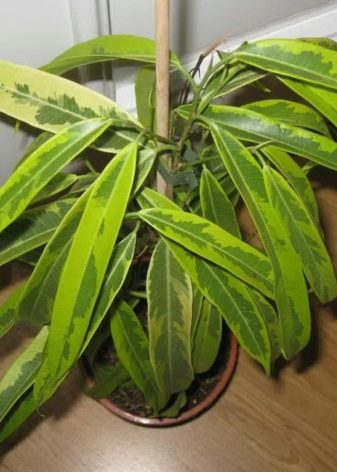

This flower should be placed near an east-facing window. Ficus needs regular ventilation of the room in which it is located... Stagnant stuffy air negatively affects the plant. However, when airing the room, it should be remembered that the flower is very afraid of drafts. There is no need to place the plant next to air conditioners or fans. In addition, it is worth considering that the plant does not like a sharp change in environmental conditions - the ficus can react very negatively to such stress.
This culture is not very demanding on the humidity of the environment. The optimal indicator of humidity for it is 50-70%. In the heat, the foliage of the ficus must be periodically sprayed. In addition, it is recommended to regularly humidify the air in the room in which the plant is located.
As for the soil, you can buy a ready-made mixture.
You can also prepare the soil yourself.
- The first way: Combine turf, peat and sand in equal parts.
- Second way: for an adult ficus, it is necessary to mix leaf and sod soil, sand, peat and humus in a ratio of 2: 2: 1: 1: 1, respectively.

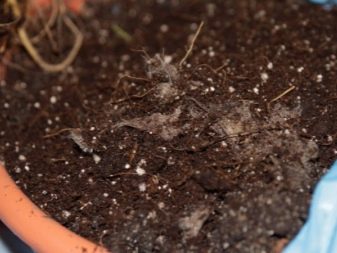
If the soil has a crumbly structure, then Benedict's ficus will need irrigation. The liquid from the pallet must be removed on time.
Top dressing is carried out in the spring 1 time in 14 days... Fertilizers need to be added to the soil. It is impossible to process ficus leaves with them. Also experts advise to dissolve the nutrients necessary for flowers in water for irrigationthat are sold in specialized stores.
You can give your green pet the volume and appearance you want with your own hands. To do this, you just need to regularly trim the excess parts of the branches. Thanks to these simple manipulations, the crown of the plant will be a matter of your pride. If you plant two young flowers in one pot and intertwine their trunks in the course of their growth, then you can end up with an original home flower with a pigtail trunk.
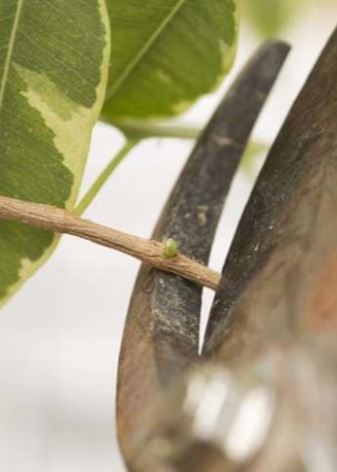
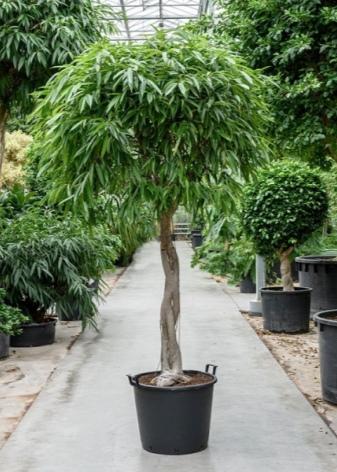
Reproduction
Flower propagation occurs by cuttings. It is better to cook them in the spring during pruning, when the crown of the flower is formed. The stalk is rooted in water. In this case, it is necessary to pay special attention to the illumination of the room. It is important to keep the room warm and add water as it evaporates.
The root can appear in 10-14 days. Ficus is planted in a permanent place when the root reaches a size of at least 2 centimeters. Planting should be carried out in nutrient soil, which must be steamed in advance.
This manipulation should be carried out in any case. If this stage is neglected, then the seedling may not take root.
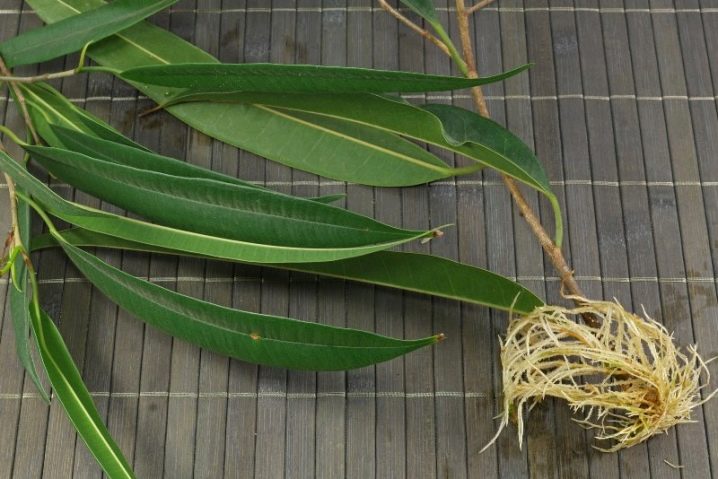
Diseases and pests
Ficus Benedict is considered relatively resistant to a variety of diseases. Pathogens and insects rarely settle on the culture. If you take care of your pet "pet", you do everything right, then you will be able to reduce the risk of developing any disease to a minimum.
Basic rules for preventive care of ficus:
- do not allow waterlogging of the soil;
- remove attention to the lighting and humidity of the environment;
- do not disturb the plant with frequent movement in unfavorable conditions (in such situations, the flower is stressed, which negatively affects its development).
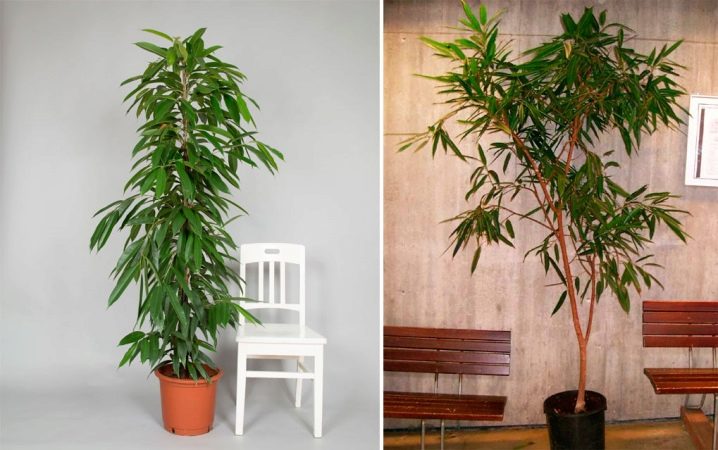
If any of these principles are violated, the plant can become sick. You can determine this by the presence of obvious signs.
- The leaves began to turn yellow and wither - the optimal lighting regime was violated.
- The leaves turn black and die off - most likely, the ficus is regularly exposed to sudden changes in temperature.
- Dark spots appeared on the seamy surface of the leaves - this is a fungus. Usually it manifests itself with a red bloom on the trunk. If you do not notice and take action in time, the plant will die.
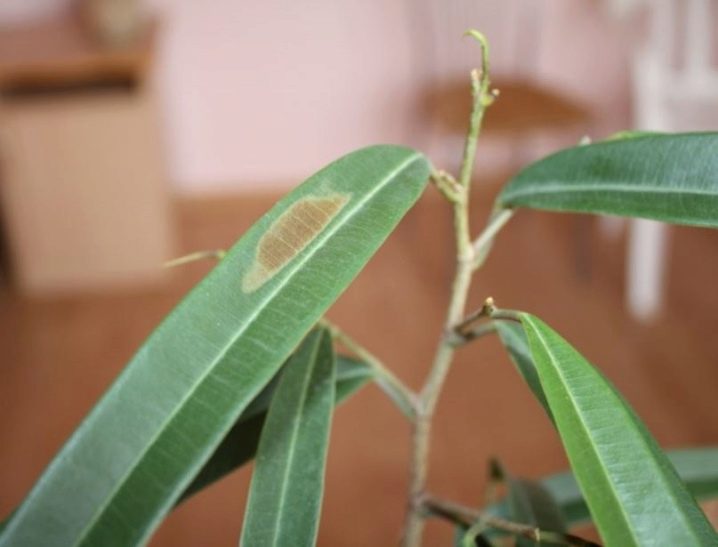
Now it's worth figuring out what pests can settle on Benedict's ficus.
- The mealybug is whitish in color.... It usually parasitizes on the branches and base of the leaves. If the flower is watered, then whitish lumps will appear on the ground - this is a clear sign of the presence of a mealybug.
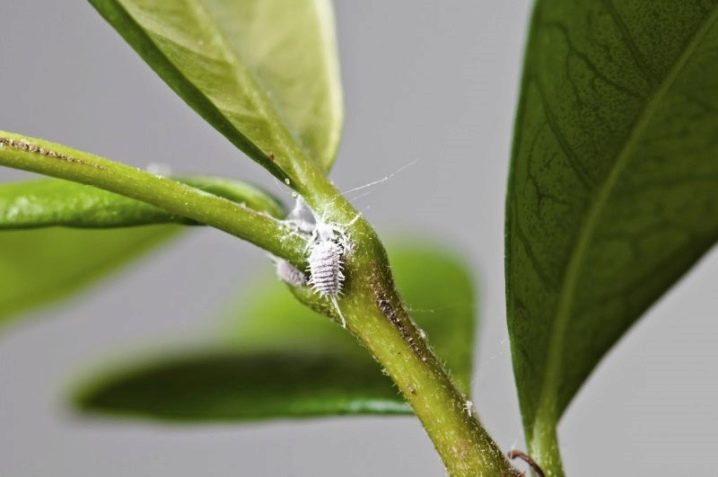
- Spider mite appears as a light spider web on the leaves... The ticks themselves are very difficult to see. The flower receives damage from this pest due to the damage to the foliage. The tick is afraid of moisture, therefore, in the fight against it, you first need to carefully treat the ficus with water at room temperature. Only then can any special agent be used to kill the tick, naturally, following the manufacturer's recommendations.
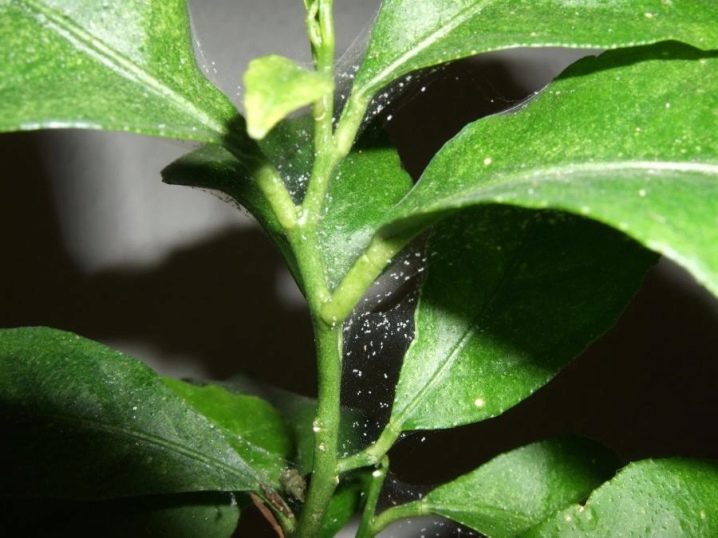
- The shield is yellow... It parasitizes on leaves and stems. It looks like a small bump. The thyroid gland can be removed by hand. Then it will be enough to treat the plant with soapy water, for the preparation of which it is better to use laundry soap.

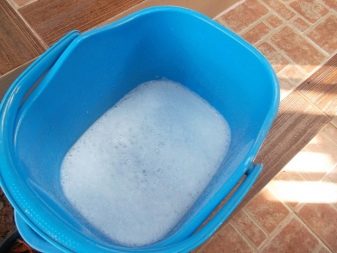
- Aphid settles next to the peduncle.
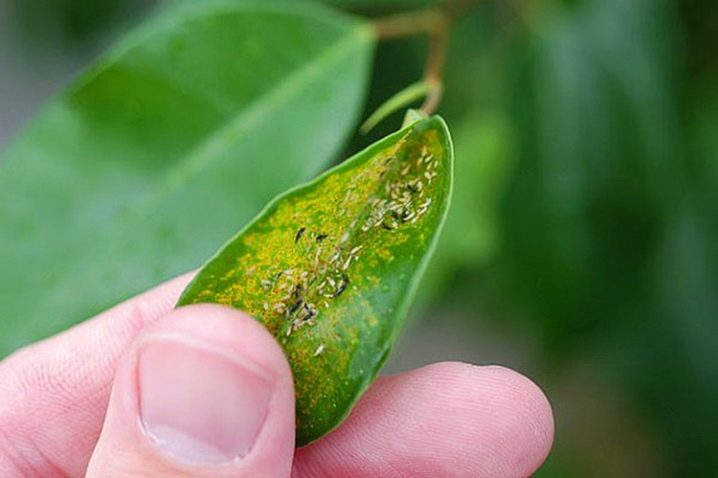
If you see signs of pests on your house plant, then you should carefully remove them from the surface with a damp sponge and sprinkle the leaves with warm water. Sometimes a complete soil replacement is required to effectively control pests.
The benefits of ficus for people
Ficus is not only a part of the interior. Experienced flower growers know that he has a lot of valuable qualities. Often this plant is used in folk medicine in the treatment of oncology, joint diseases, gynecological problems, and hematomas. Frozen ficus is used to treat hemorrhoids. The flower leaves are an excellent base for alcohol-based medicines, which are used in the treatment of inflammatory diseases of the oral cavity.
And you can also recall several popular beliefs.
- Ficus can help fight insomnia.
- Ficus can have a positive effect on infertility. But in this case, close people should give it.
- Popular wisdom says that the ficus has a strong energy that can help in the fight against evil spirits.
- Unmarried girls should not acquire a ficus plant, as there is a belief that this plant turns men away. Only a flower that the girl has grown from beginning to end on her own can save from loneliness, but it is still not recommended to keep it in the bedroom.

In the next video, you will find tips for caring for one of the varieties of ficus Benedict - Ali.































The comment was sent successfully.